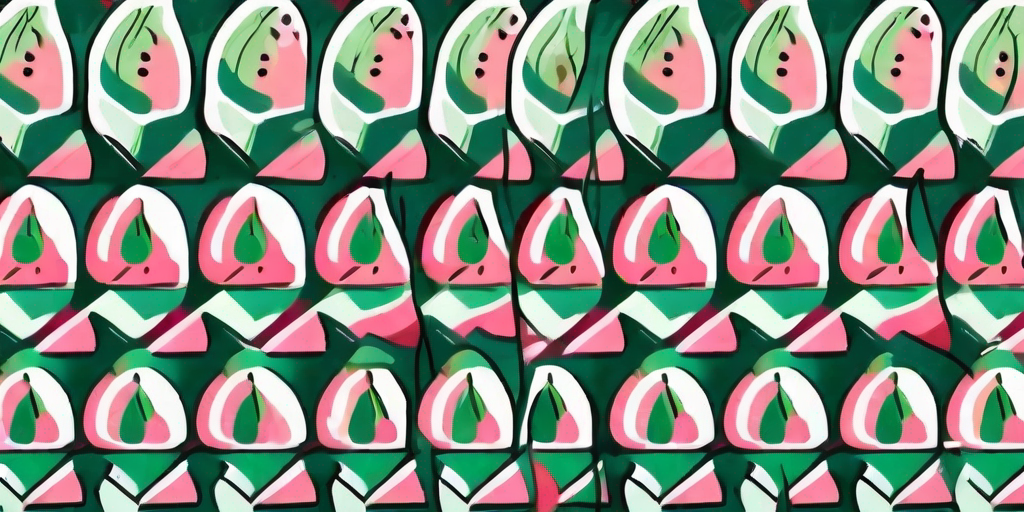
Watermelons, the quintessential summer fruit, are not just a refreshing snack on a hot day, but also a fun and rewarding gardening project. If you've ever wondered how to grow your own watermelons, you're in the right place. We're about to embark on a juicy journey from seed to fruit, with a few laughs along the way.
Choosing the Right Watermelon Seeds
First things first, you need to choose the right seeds. Not all watermelon seeds are created equal, and the variety you choose can have a big impact on the success of your watermelon growing adventure.
There are two main types of watermelon seeds: open-pollinated and hybrid. Open-pollinated seeds are the result of natural pollination, while hybrid seeds are the result of cross-pollinating two different varieties of watermelon. Open-pollinated seeds tend to produce fruit that is more consistent in size and taste, while hybrid seeds can produce larger and more disease-resistant fruit.
When choosing your seeds, also consider the size of the fruit you want to grow and the length of your growing season. Some varieties of watermelon need a longer growing season than others.
Top Watermelon Varieties
Here are a few popular watermelon varieties to consider:
- Sugar Baby: This variety produces small, sweet watermelons that are perfect for small gardens or containers.
- Crimson Sweet: This variety is known for its large, sweet, and juicy fruit.
- Yellow Doll: This variety produces small, yellow-fleshed watermelons with a unique, sweet flavor.
Planting Your Watermelon Seeds
Now that you've chosen your seeds, it's time to get planting. Watermelons prefer warm soil and plenty of sun, so choose a sunny spot in your garden and wait until the soil has warmed up in the spring before planting your seeds.
Plant your seeds about 1 inch deep and 2 feet apart in rows that are 6 feet apart. Watermelons need plenty of space to grow, so don't skimp on the spacing.
Water your seeds well after planting and keep the soil moist but not waterlogged. Too much water can cause the seeds to rot, so be careful not to overwater.
Starting Seeds Indoors
If you have a short growing season, you might want to start your watermelon seeds indoors. Start your seeds about 6 weeks before the last expected frost in your area. Plant the seeds in peat pots or other biodegradable containers that can be planted directly in the ground, as watermelons don't like to have their roots disturbed.
Caring for Your Watermelon Seedlings
Once your seeds have sprouted, it's time to start caring for your watermelon seedlings. Watermelon plants need plenty of water and nutrients to grow, so be sure to water your plants regularly and fertilize them with a balanced fertilizer.
Watermelon plants also need plenty of sunlight, so make sure your plants are getting at least 6 hours of direct sunlight each day. If your plants aren't getting enough sunlight, they may become weak and spindly.
Keep an eye out for pests and diseases, as these can quickly decimate your watermelon crop. Common pests include aphids, cucumber beetles, and vine borers, while common diseases include powdery mildew and fusarium wilt.
Training Your Watermelon Vines
As your watermelon plants grow, they will start to produce long, sprawling vines. These vines can take up a lot of space in your garden, so you might want to train them to grow in a certain direction or up a trellis. This can help to save space and also keep the fruit off the ground, reducing the risk of rot and pest damage.
Harvesting Your Watermelons
After all your hard work, it's finally time to harvest your watermelons. But how do you know when they're ready? One way is to look at the spot where the watermelon is resting on the ground. If this spot is yellow, the watermelon is likely ripe. Another way is to tap on the watermelon. If it sounds hollow, it's probably ready to harvest.
Once you've determined that your watermelons are ripe, cut them from the vine with a sharp knife. Be sure to leave a few inches of stem attached to the fruit to help it stay fresh longer.
Frequently Asked Questions
How long does it take to grow a watermelon?
It typically takes about 70 to 90 days to grow a watermelon from seed to fruit, depending on the variety.
Can I grow watermelons in containers?
Yes, you can grow watermelons in containers, but you'll need a large container and a dwarf or bush variety of watermelon.
Why are my watermelons small and tasteless?
This could be due to a lack of water or nutrients, or it could be because the watermelons were harvested too early.
So there you have it, folks. Growing your own juicy watermelons isn't as complicated as it might seem. With a bit of patience, some care, and a dash of humor, you'll be enjoying your own homegrown watermelons in no time. Happy gardening!











